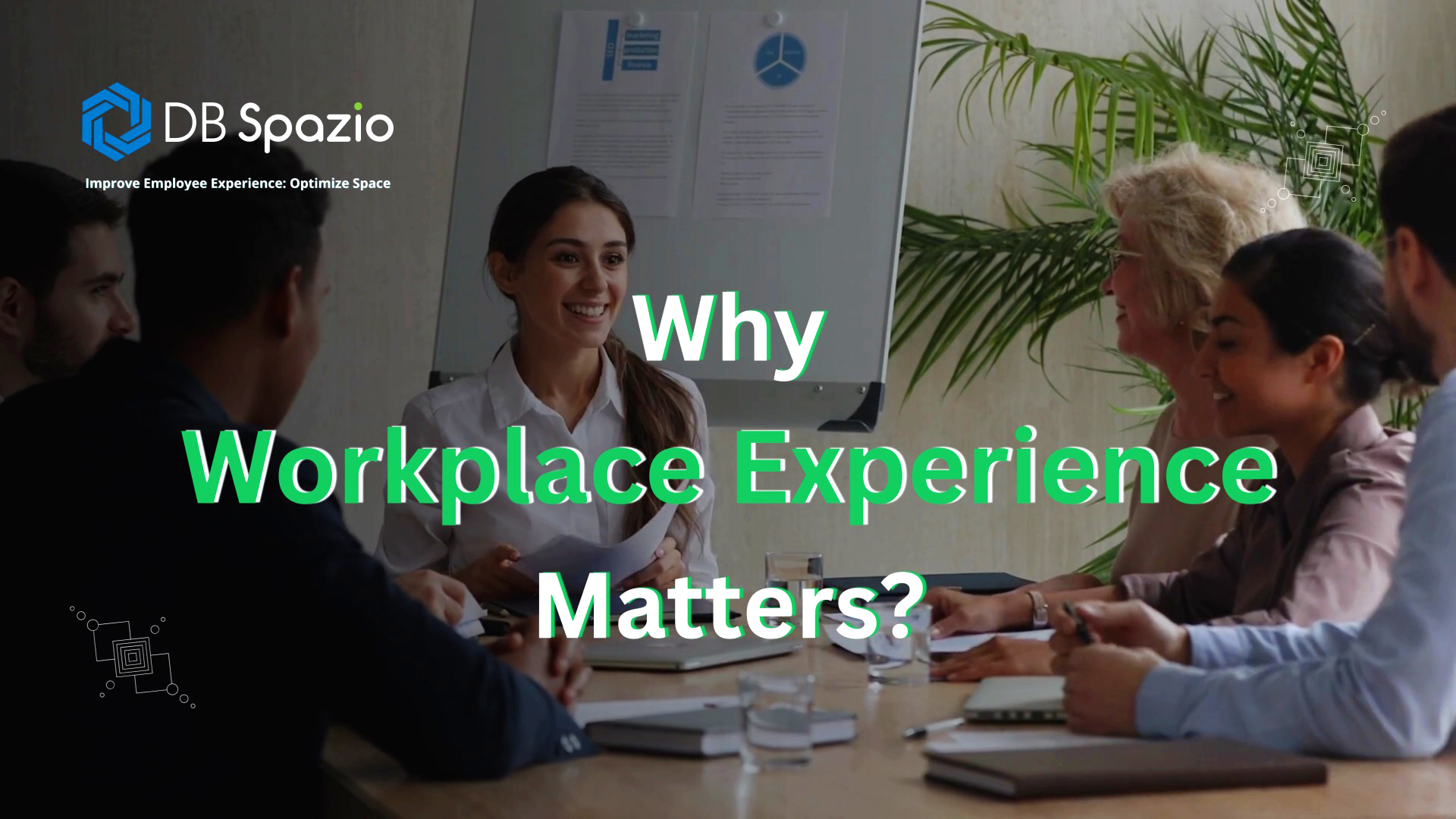Workplace experience has undergone substantial transformation over the past few years. Enterprises are altering the way we envision workspaces, our expectations around them, and the vital role they play in our day-to-day lives.
In line with this shift, companies are focused on building strategies that ensure a seamless workplace experience. This effort helps attract employees back to the office, prioritize their well-being, and boost their overall effectiveness.
Notably, Gallup’s meta-analysis reveals a concerning trend—employee engagement is declining in 2022, particularly among full-time, on-site workers. This underscores the urgency and importance of creating an engaging and fulfilling workplace experience to counter this trend and bolster organizational success.
This blog seeks to explain the modern concept of workplace experience, its various parts, and the big benefits it offers to businesses.
What is Workplace Experience?
In simple terms, workplace experience refers to the emotions and perceptions individuals have from the moment they plan to go to work, commute, and throughout their time in the workplace until they leave. As discussed in our recent blog post on optimizing client workplace experience, the main goal of creating a seamless workplace experience is to eliminate various stress points and barriers for both employees and visitors. This includes:
- Ease of access to and from the workplace
- Availability of resources and amenities at the workplace
- Comfortable and safe work environment
- Ease of Navigation within the facility
- Technology to streamline processes while ensuring compliance
- Engaging employees and fostering a sense of purpose
Elements of Workplace Experience
The workplace ecosystem prominently encompasses the following three elements. Each elaborated below with examples to guide relevant stakeholders:
Physical Workplace
The physical workplace is the obvious and the one that naturally comes to our minds when we envision workplace experience. Given that organizations are struggling to bring employees back to work, this one becomes an important focus area.
In the prevailing hybrid work environment, employees no longer come to the office solely for their routine desk jobs; they come for a specific purpose. According to Microsoft Work Trend Index Research 2022, 84% of employees would visit office to socialize with co-workers. This has created a need for CRE teams to reimagine workplaces with layouts that enable collaboration, creating inviting and comforting environment.
Amenities also hold significant importance. Factors such as ample parking, easy access to public transport like buses or metros, contribute to organizations ‘earning the commute’ from their employees. Providing simple controls to adjust lighting and temperatures creates a conducive and productive working environment. Safety and hygiene have now become non-negotiable prerequisites for employees to even contemplate returning to the workplace. During our interactions with Facility Management teams, they see consistently higher attendance on the days when exotic lunch options are provided.
Employees
Employees play a crucial role in creating a positive workplace environment. Empowering them to contribute to a positive workplace experience involves fostering a culture of collaboration, communication, and active participation. Here are key aspects that aid achieving this:
- Develop employee focused hybrid work policies that align with business objectives
- Promote flexibility and autonomy allowing employees tailor their schedules and workplace environment to their preferences
- Encourage collaboration and team building through strategies such as neighbourhood seating and nudging groups to visit the office, among other initiatives
- Invest in employee well-being promoting work-life balance, encouraging regular breaks and providing workplace environment that is safe, hygienic and productive
- Open communication and feedback channels to share their thoughts, concerns and ideas around workplace experience and address recurring issues on a priority
Technology
Hybrid work arrangements have put technology at the forefront in creating meaningful workplace experiences for employees as well as visitors and clients. Digital workplaces help streamline various elements of experience allowing individuals to focus on building relationship and delivering high-value work. The primary areas of focus to enhance the overall workplace experience are:
- Workspace planning helps with continuously optimizing resource allocation across teams, considering efficiency and departmental needs
- Seamless resource reservation of resources such as meeting rooms, desks, parking slot etc. plays an important role in building flexible work environment ensuring positive and frictionless employee experience
- Facilitating collaboration requires investment into communication and conferencing systems encouraging employees to work together in-person or within a hybrid work environment. This includes nudging employee groups to visit the offices to foster collaboration, imbibe the company culture, and expedite innovation.
- Employee engagement tools such as unified employee app, interactive kiosks that provides access to all the workplace services. This not only helps create differentiated employee experience but also improves employee productivity
- Workplace Analytics provide valuable insights that can help businesses optimize their resources, improve productivity, and support their sustainability & employee wellness goals, all of which can contribute to a more successful and profitable business.
- Artificial Intelligence (AI) has the potential to revolutionize hybrid workplaces. AI’s continuous learning and ability to use past data make it a potent tool to provide valuable assistance and triggers to employees, boost productivity, and enhance decision-making.
By focusing on and optimizing these aspects, organizations can elevate the workplace experience, ensuring a positive and productive environment for their employees, visitors, and clients.
Benefits of Workplace Experience
Elevating workplace experience in an organization has multitude of benefits that directly impact employees, facility management teams and helps with overall success of the organization. Here are some prominent advantages listed below.

- Enhanced Employee Productivity
A workplace that efficiently handles routine tasks allows employees to dedicate their time to high-value work, ultimately leading to improved overall outcomes for the organization. According to Harvard Business Review, Happy employees are 31% more productive.
- Improved Talent Acquisition and Retention
Great workplace experience is a powerful tool for attracting and retaining top talent in the organization. Organizations that prioritize employee experience see a 59% reduction in turnover. When employees feel valued, secure, and productive, it not only enhances their commitment but also lowers attrition rates.
- Enhanced Client Experience
Happy employees lead to superior client experience. And focus on client workplace experience means fostering stronger relationship and business growth. A 2023 study by Gallup found that companies with highly engaged employees experience a 10% increase in customer loyalty and a 23% increase in profitability.
- Cost Savings and Efficiency Gains
A well-designed workplace that maximizes space utilization and supports flexible work arrangements can result in cost savings related to real estate, utilities, and associated overheads. According to Accenture, businesses could reduce their office space footprint by up to 40% by carefully rightsizing their real estate based on future headcount, growth projections and workforce models.
- Employee Well-being
A workspace that focuses on physical, mental, and emotional health leads to reduced stress, improved work-life balance, and a healthier, happier workforce.
Conclusion
The modern workplace is evolving, with employees seeking environments that prioritize their well-being, engagement, and overall job satisfaction. Recognizing this shift and actively engaging with it through thoughtful workplace design, technology integration, and employee-centric policies sets the stage for a flourishing organizational ecosystem.
It is crucial to understand that a positive workplace experience isn’t just a luxury—it’s an essential element that directly influences an organization’s success, growth, and ability to thrive in an increasingly competitive landscape. Constantly nurturing and enhancing this experience isn’t just an investment in the present; it’s a strategy to ensure a prosperous future for all stakeholders.




